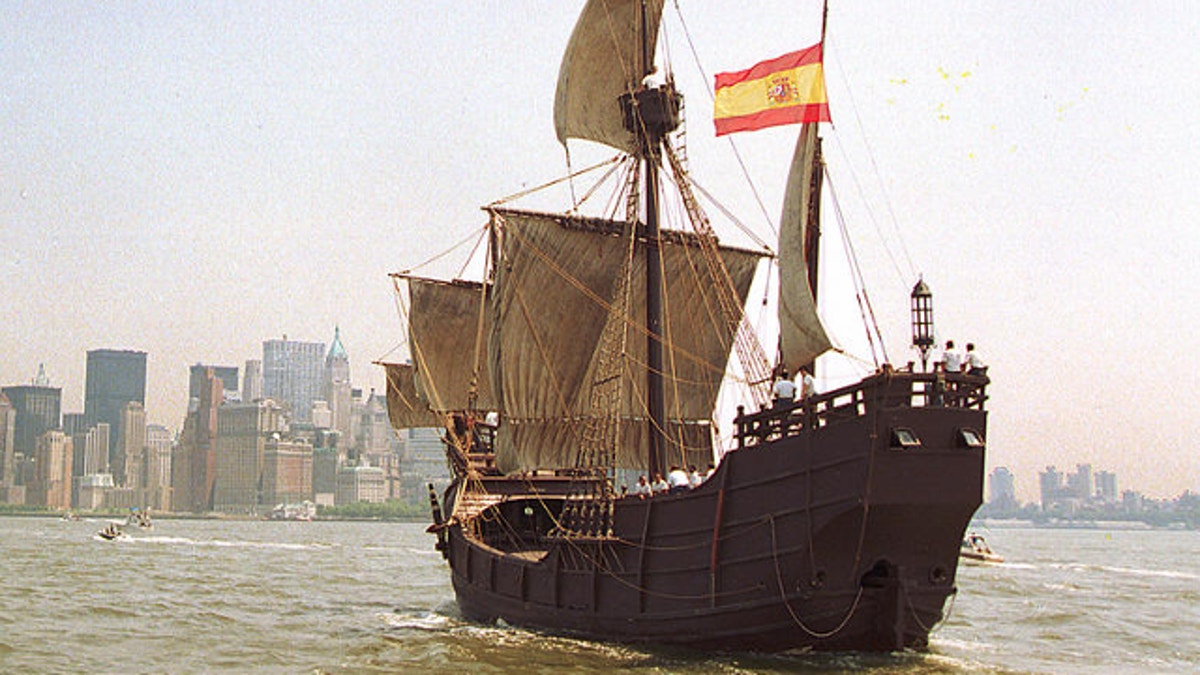
June 26, 1992: A replica of Christopher Columbus' cargo ship, the Santa Maria, is shown. (AP)
Researchers believe that they have identified the wreck of Christopher Columbus' flagship, the Santa Maria, more than 520 years after it ran aground off the northern coast of Haiti, according to a published report.
"All the geographical, underwater topography and archaeological evidence strongly suggests that this wreck is Columbus’ famous flagship, the Santa Maria," researcher Barry Clifford told The Independent newspaper.
The wreck had already been discovered and photographed in 2003, but it is not until recently that researchers have considered the possibility that it might be the largest of the three ships Columbus sailed from Spain in 1492.
Among the evidence for the discovery is the fact that the location of the wreckage in relation to that of Columbus' fort matches a description given by the explorer in his diary. The topography of the site is a match with what is known about the location of the shipwreck on Christmas Day 1492, and the vessel's footprint matches the ship's size.
In addition, photographic evidence from the 2003 discovery shows objects that date the ship from Columbus' era. However, many of those objects, including a ship's cannon, have been looted in the intervening years.
Clifford told the Independent that his hope is that the ship, if it is confirmed to be the Santa Maria, will be recovered, conserved, and put on display in a Haitian museum.




















